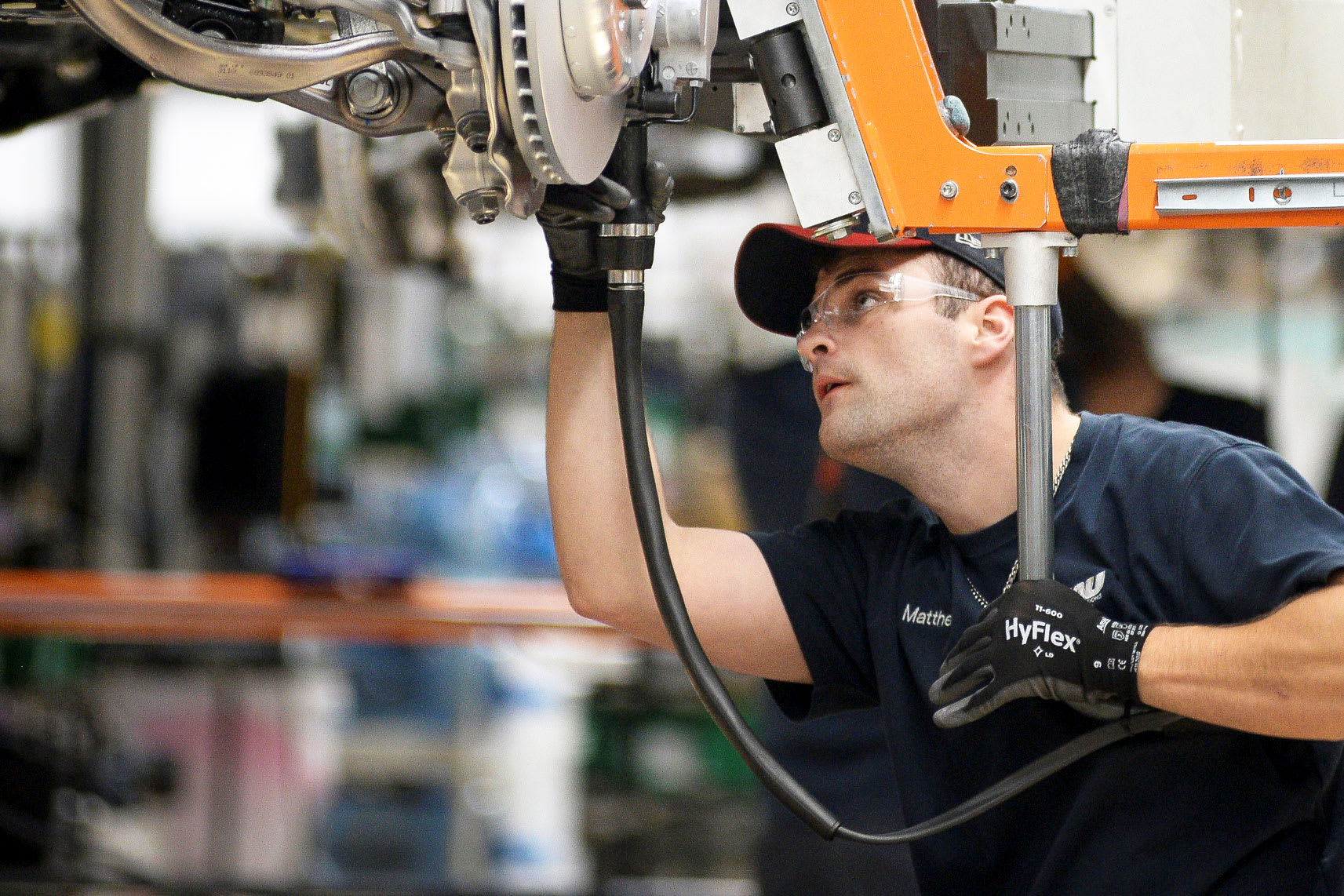A worker assembles an X model at the BMW manufacturing facility in Greer, South Carolina, November 4, 2019.
Charles Mostoller | Reuters
Economic activity in the second quarter has been cut by more than half, according to a tracker employed by the Atlanta Federal Reserve.
The GDPNow outlook is now showing a 52.8% tumble, following data Monday that U.S. manufacturing remains firmly in decline and will weigh on investment and consumption. That data from the Institute for Supply Manufacturing showed just 43.1% of firms seeing expansion in May.
Extrapolating from that data, the Atlanta Fed anticipates personal consumption expenditures, which make up 68% of the nation’s gross domestic product, to fall 58.1% in the April-to-June period. Gross private domestic investment, which accounts for 17% of GDP, is now projected to slide 62.6%.
The GDPNow reading undergoes regular revisions and generally is more accurate as it gets closer to the end of the quarter, which in this case is June 30. The New York Fed’s GDP Nowcast, which was last updated before the ISM release, estimates a 35.5% Q2 drop, while CNBC’s Rapid Update survey of leading economists has a median 38% decline.
The one bright side of the even steeper slide is that it could point to a sharper recovery at least in the short term, said Ed Yardeni of Yardeni Research. He projects the third quarter to see a 20% rebound followed by a 5% gain in the fourth quarter.
After that, though, the situation gets cloudy.
A ‘swoosh’ for the long term
“Beyond that, we agree that it could be a swoosh with low single-digit growth rates. We don’t expect that real GDP will recover back to its Q4-2019 record high until late 2022,” Yardeni said in his morning note Tuesday.
The blow to the economy comes as most states have begun to relax stay-at-home restrictions stemming from the coronavirus pandemic. Even with the reopenings, the economic data for the period is expected to be among the worst the U.S. has ever seen.
Friday’s nonfarm payrolls report is expected to show that another 8.3 million Americans lost their jobs in April, bringing the unemployment rate to 19.5%. That’s on top of the 20.5 million payrolls drop in March and a 14.7% jobless level.
Yardeni estimates that it could take until October 2022 before the Coincident Economic Indicators index, which tracks current economic activity metrics, to return to its February high. The Congressional Budget Office said Monday it could take a decade before economic activity returns to normal.
“So the initial V-shaped rebound could eventually turn out to be a swoosh,” Yardeni said. “This outlook allows for the possibility of a second wave of COVID-19 infections, though not as bad as the first wave and without another round of lockdowns.”
The current slide in activity has been unique in that it has been led by services sector, rather than manufacturing or construction as is common in recessions. Of the jobs lost in April, 17.2 million came from the services side, including nearly 7.7 million in leisure and hospitality.
From a historical perspective, Yardeni said industrial production and housing are more likely to see V-shaped recoveries, while that is unlikely to be the case for retail, restaurants, airlines, hotels, casinos, entertainment and recreation.


 Signal2forex.com - Best Forex robots and signals
Signal2forex.com - Best Forex robots and signals




